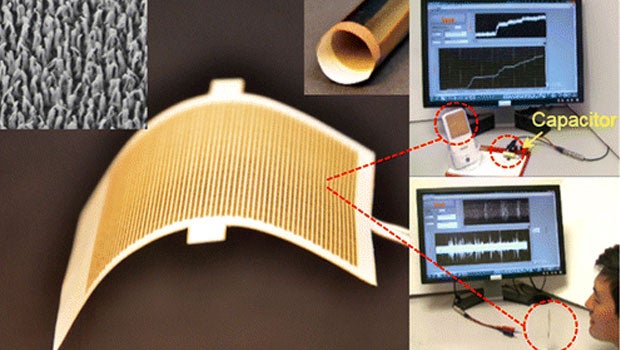Your smartphone could soon recharge using sound waves

Tired of your smartphone running low on battery? Well so were the boffins at the Georgia Institute of Technology who just found a way of turning ‘wasted’ sound energy into power.
The nanotechnologists behind this breakthrough have suggested that the fledgling system could one day be used to boost your smartphone’s battery using little more than background noise.
From the rumble of traffic to crowd chatter, all sound wastage can be used to generate energy. How? Well, using the team’s ACS Nano published research, let us explain.
This method of power harvesting has been achieved by using a laser to burn microscopic holes in a postage stamp sized piece of paper.
One side of the film is then coated in copper, with the other affixed with the same polytetrafluoroethylene material found on the bottom on non-stick frying pans. Both sides are attached on just one edge, allowing the materials to move.
At this stage, the level of harvested power is relatively low – 121 milliwatts per square meter under a sound pressure of 117dB to be precise.
Related: Google X Lab working on battery tech
Although the tech might still be some way from keeping you smartphone running all day and night, the research is a positive sign of things to come in the battery-boosting space.
Earlier this month with saw prototype mobile battery technology that could fully recharge a phone in just one minute.
The aluminium cell, developed by chemistry scientists at Stanford University, promises ‘unprecedented charging times’ and is less volatile than current Lithium-Ion offerings.
There is currently no word on when the sound capturing battery tech could be incorporated into commercially available products.

